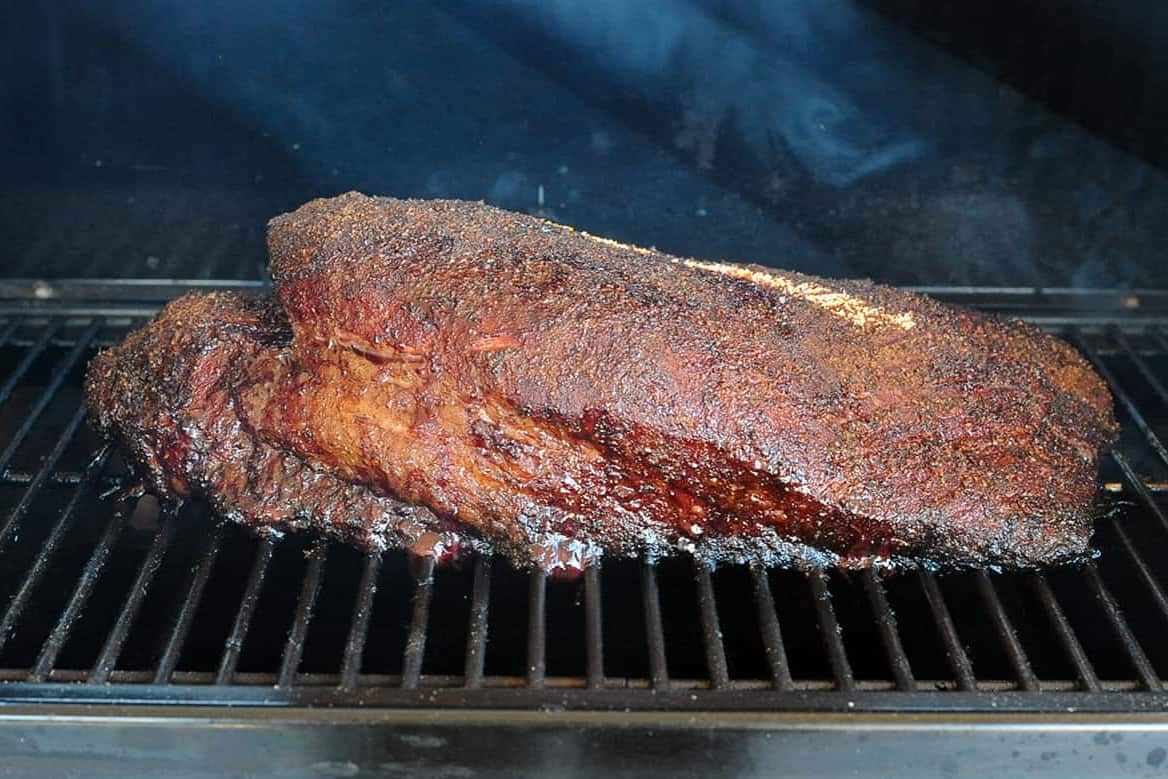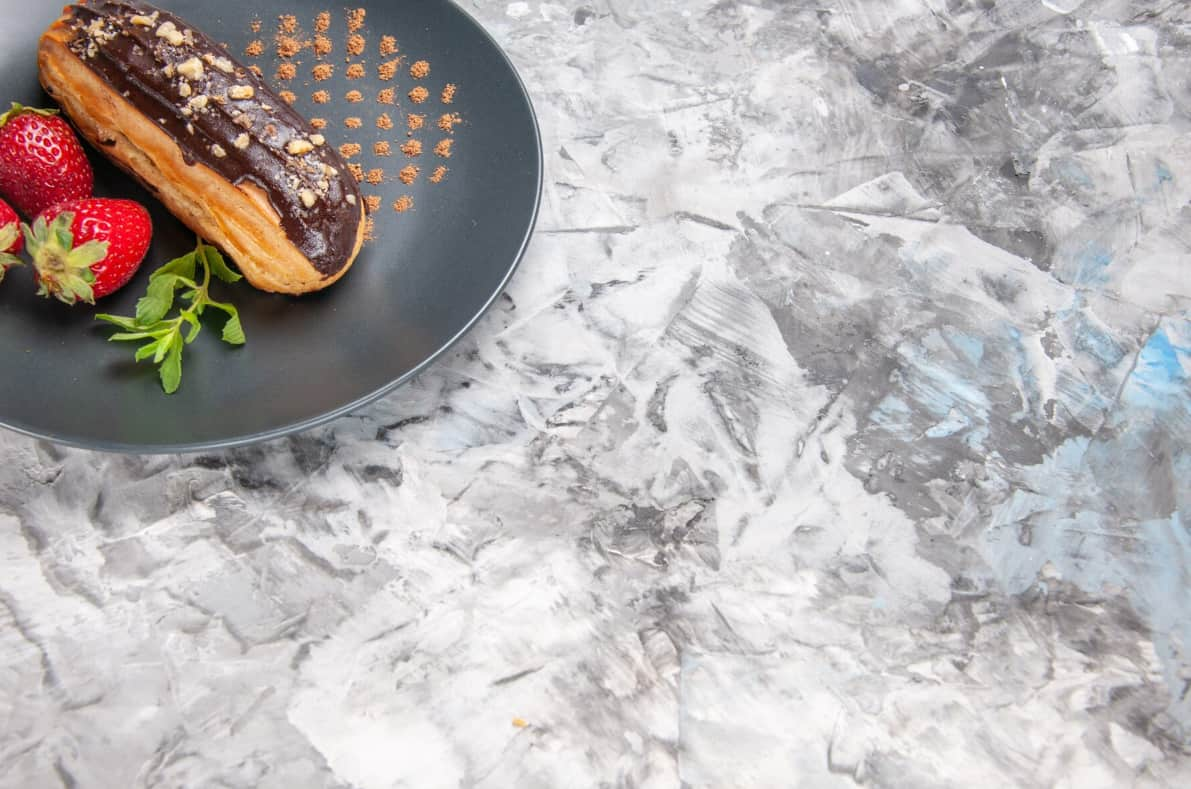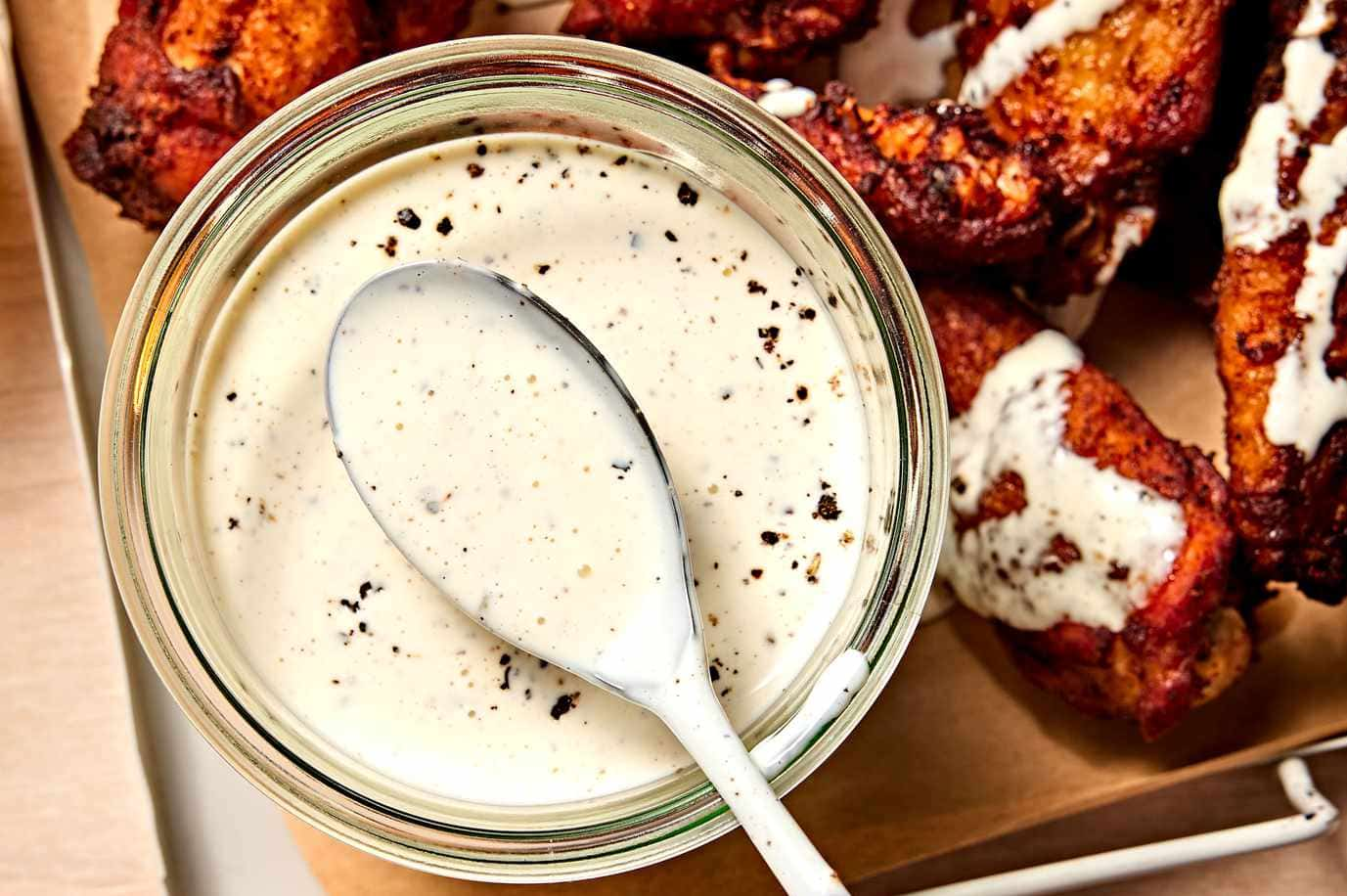If you’ve ever tried smoking a brisket, you know that timing is everything. The phrase “low and slow” isn’t just a catchy barbecue saying—it’s the golden rule for transforming a tough cut of beef into a tender, juicy masterpiece.
But how long to smoke a brisket per pound can be confusing for both beginners and experienced pitmasters.
While many know to cook until a probe slides in like butter or the internal temperature reaches between 180°F and 200°F, this doesn’t help when planning a meal for guests who expect to eat at a specific time.
Understanding how long to smoke a brisket per pound is essential for proper meal planning and achieving that perfect bark, smoke ring, and melt-in-your-mouth texture.
The cooking time varies based on multiple factors, including smoker temperature, brisket size, and even weather conditions.
Generally speaking, at 225°F, you’ll need about 1.5 to 2 hours per pound of brisket—but this is just a starting point.
A 12-pound brisket might take anywhere from 18 to 24 hours from start to finish when you include preparation, smoking, and resting time.
How Long to Smoke a Brisket Per Pound?

In this comprehensive guide, we’ll break down everything you need to know about smoking times for briskets of all sizes.
We’ll cover factors that affect cooking time, techniques to speed up the process without sacrificing quality, and provide specific time estimates for briskets ranging from small 1.5-pound cuts to massive 16-pound whole packers.
Whether you’re smoking your first brisket or looking to perfect your technique, this guide will help ensure your next barbecue is a smoky success.
How Long to Smoke a Brisket Per Pound?
The time needed to smoke a brisket properly depends primarily on two factors: the temperature of your smoker and the weight of your brisket. At the standard smoking temperature of 225°F, you’ll need approximately 1.5 to 2 hours per pound of brisket to achieve that perfect, tender result.
This means:
- A 10-pound brisket will take roughly 15-20 hours
- A 12-pound brisket will need about 18-24 hours
- A 15-pound brisket could require 22-30 hours
Remember: These are estimates, not exact times. Every piece of meat is unique in its composition, fat content, and how it responds to heat. Always use internal temperature and the probe test as your primary methods for determining doneness.
If you’re working with a higher smoking temperature, your per-pound cooking times will decrease:
- At 250°F: 1 to 1.5 hours per pound
- At 275°F: 45 minutes to 1 hour per pound
- At 300°F: 30 to 45 minutes per pound
While higher temperatures reduce cooking time, they may impact the final texture and flavor development. The low-and-slow approach at 225°F remains the gold standard for developing deep flavor and achieving that perfect tenderness.
How Many Hours Per Pound to Smoke a Brisket?
While the hours-per-pound method provides a useful guideline, it’s important to understand that it’s not an exact science. Let’s look at how temperature affects cooking time in greater detail:
| Smoker Temperature | Hours Per Pound | Example: 12lb Brisket |
|---|---|---|
| 225°F | 1.5-2 hours | 18-24 hours |
| 250°F | 1-1.5 hours | 12-18 hours |
| 275°F | 45min-1 hour | 9-12 hours |
| 300°F | 30-45 minutes | 6-9 hours |
Important note: Always leave extra time in your schedule for the unexpected. Briskets are notorious for “stalling” (when the internal temperature plateaus), which can add hours to your cooking time. It’s better to finish early and hold the brisket at serving temperature than to have hungry guests waiting for meat that’s not ready.
Other Factors to Consider
The cooking temperature and brisket weight aren’t the only variables that affect cooking time. Here are several other important factors to keep in mind:
- Brisket size and thickness: Larger, thicker briskets take longer to cook per pound because heat needs more time to penetrate to the center of the meat. A flat cut and a point cut of equal weight may cook at different rates due to their different shapes.
- Fat content: More marbling and a thicker fat cap can speed up cooking time, as fat conducts heat differently than lean meat. Prime grade briskets with more marbling typically cook faster than Select grade briskets.
- Weather conditions: Outdoor temperature, wind, and humidity significantly affect your smoker’s ability to maintain temperature. On a cold, windy day, your brisket might take over 2 hours per pound, while on a warm, still day, it might cook more quickly.
- Smoker type: Different smokers have varying levels of temperature consistency.
- Electric and gas smokers provide consistent heat
- Offset smokers may have temperature fluctuations
- Ceramic kamado-style smokers hold heat well but may take time to adjust
- Lid opening: Every time you open the smoker, you release heat and extend cooking time. Using an external temperature probe eliminates the need to check frequently.
- Starting meat temperature: Bringing your brisket to room temperature before smoking (about 30-60 minutes on the counter) can reduce cooking time.
- Wrapping method: Using the “Texas crutch” method of wrapping in foil or butcher paper can significantly reduce cooking time.
Fat Side Up or Down?
While the fat orientation won’t dramatically affect your cooking time, it does impact the final product. There’s an ongoing debate among pitmasters about the best approach:
Fat Side Up:
- Pros: Fat supposedly “bastes” the meat as it renders down
- Best for: Smokers where the heat comes from above
- Results in: Potentially juicier meat
Fat Side Down:
- Pros: Creates a protective barrier between the meat and direct heat
- Best for: Smokers where the heat comes from below
- Results in: Better bark formation and prevents meat from sticking to grates
The verdict: For most home smokers, fat side down is often the better choice because heat typically comes from below. The fat acts as insulation, preventing the bottom of the brisket from drying out or burning. However, experiment with both methods to see what works best with your specific smoker.
How Long to Cook a Small Brisket?
Smaller briskets (under 5 pounds) require more attention because they can easily overcook. These are often cut portions rather than whole packers, which changes their cooking dynamics.
For small briskets:
- Check the temperature more frequently
- Expect faster cooking times per pound
- Consider lowering your smoker temperature slightly to 215-220°F
- Be especially vigilant during the final stages of cooking
When smoking a small brisket flat (which has less fat than the point), you’ll need to be particularly careful about preventing it from drying out. Consider using a water pan in your smoker and possibly spritzing the meat occasionally with apple juice or water.
Ways to Shorten the Cooking Time
Sometimes, you need your brisket done sooner rather than later. Here are effective methods to speed up the process without completely sacrificing quality:
The Texas Crutch Method
- Smoke the brisket unwrapped until it reaches the “stall” (around 150-170°F)
- Remove from the smoker and wrap tightly in:
- Aluminum foil: Faster cooking, but less bark development
- Pink butcher paper: Slightly slower than foil, but better bark and smoke flavor
- Return to the smoker and continue cooking until done
Time saved: 2-4 hours on a standard-sized brisket
Hot and Fast Method
This technique abandons the traditional low-and-slow approach:
- Preheat smoker to 350°F
- Place the brisket fat side down initially to protect the meat
- Wrap in foil when internal temperature reaches 170°F
- Return to the smoker, fat side up
- Cook until internal temperature reaches 203°F, then check tenderness
Time saved: Up to 50% compared to traditional methods
Oven Finish Method
- Smoke the brisket for 4-6 hours to develop flavor
- Transfer to the oven at 250-275°F in a covered roasting pan with some liquid
- Cook until it reaches the target internal temperature
Time saved: Minimal, but it frees up your smoker for other foods
Separating the Point and Flat
- Divide the whole packer into separate point and flat sections before cooking
- Smoke separately (they’ll cook at different rates)
Time saved: 2-4 hours on larger briskets
Important: While these methods will produce a decent brisket in less time, the traditional low-and-slow method generally yields superior results, especially in terms of smoke penetration and bark development.
Additional Tips
For brisket smoking success, consider these helpful tips:
- Use a good thermometer: Invest in a dual-probe thermometer—one for meat temperature and one for smoker temperature. Wireless models let you monitor without opening the lid.
- The probe test matters more than temperature: When a probe slides into the meat with no resistance (like butter), your brisket is done, regardless of the exact temperature.
- Don’t skip the rest: Properly resting your brisket is crucial. For the best results:
- Wrap in butcher paper or foil
- Wrap again in towels
- Place in a cooler (without ice) for 2-4 hours
- This allows proteins to reabsorb moisture and results in juicier meat
- Prepare for the stall: Between about 150-170°F, your brisket’s temperature will plateau for several hours. This is normal and happens as moisture evaporates from the surface of the meat. Don’t panic and crank up the heat—wait it out or use the Texas crutch.
- Consider your slicing: Always slice brisket against the grain for maximum tenderness. The grain direction differs between the point and flat sections.
- Plan for yield: A raw brisket will lose approximately 40-50% of its weight during cooking. A 10-pound raw brisket typically yields about 5-6 pounds of cooked meat.
How Long to Smoke a Brisket Per Pound: Breaking it Down by Size
How Long to Smoke a 1.5 lb Brisket
A brisket this small is likely a portion cut rather than a whole packer. At 225°F, expect about 2-3 hours total cooking time. Begin checking the temperature after 90 minutes, as smaller cuts can cook surprisingly quickly.
Tips for small cuts:
- Consider lowering the temperature to 215°F to prevent overcooking
- Check the temperature more frequently
- Consider adding a water pan to your smoker for moisture
How Long to Smoke a 2 lb Brisket
A 2-pound brisket follows similar principles to the 1.5-pounder. Plan for approximately 3-4 hours total cooking time at 225°F. Start checking the temperature at the 2.5-hour mark.
Remember: Small cuts like this have less margin for error. Even an extra 30 minutes can be the difference between perfect and dry.
How Long to Smoke a 2.5 lb Brisket
For a 2.5-pound brisket portion, allow approximately 4-5 hours of cooking time. Don’t neglect the resting period—even small cuts benefit from at least 30 minutes of rest after cooking.
How Long to Smoke a 3 lb Brisket
A 3-pound brisket will typically take 4.5-6 hours to smoke properly at 225°F. If you’re cooking a portion of the point (the fattier section), it can safely reach higher internal temperatures without drying out compared to the flat.
How Long To Smoke a 4 lb Brisket
For a 4-pound brisket, plan on 6-8 hours of smoking time. Begin probing for tenderness around the 6-hour mark, but don’t be surprised if it needs additional time.
How Long To Smoke a 5 lb Brisket
A 5-pound brisket (often a trimmed flat section) generally needs 7.5-10 hours of cooking time. Because the flat is leaner than the point, be especially vigilant about overcooking.
Note: A 5-pound raw brisket will yield approximately 2.5-3 pounds of cooked meat after moisture loss.
How Long To Smoke a 8 lb Brisket
When smoking an 8-pound brisket, allow 12-16 hours of cooking time. Begin checking for doneness around the 10-hour mark, but be prepared for it to take the full 16 hours, especially if you encounter a lengthy stall.
How Long To Smoke a 9 lb Brisket
A 9-pound brisket typically requires 13.5-18 hours to smoke properly. Begin checking temperature and tenderness around the 12-hour mark.
How Long To Smoke a 10 lb Brisket
For a 10-pound brisket, the standard calculation suggests about 15-20 hours, but experienced pitmasters know to be flexible. Your 10-pounder might be done in as little as 10 hours or take as long as 20 hours—the meat decides when it’s ready, not the clock.
Important reminder: Temperature and tenderness are your guides, not time. A properly cooked brisket should probe like butter when done.
How Long To Smoke a 14 lb Brisket
As briskets get larger, the per-pound time estimate becomes less precise. For a 14-pound whole packer, plan for approximately 17.5-28 hours, but begin testing for doneness around the 17-hour mark.
Pro tip: For briskets this size, consider starting very early in the morning or even the night before your planned meal time.
How Long To Smoke a 15 lb Brisket
A 15-pound brisket represents a significant time investment. Allow 18-30 hours for complete smoking time. Begin checking tenderness around 18 hours, but don’t be surprised if it takes considerably longer.
How Long To Smoke a 16 lb Brisket
For massive 16-pound briskets, you’re looking at a 24-32 hour commitment from start to finish. If you’re cooking for a specific mealtime, start at least 32 hours in advance. If the brisket finishes early, you can:
- Hold it in a cooler wrapped in towels (for up to 4 hours)
- Refrigerate and reheat it later
Alternative approach: For briskets this large, consider separating the point and flat sections before cooking. They’ll cook faster individually and give you more flexibility.
FAQs
- What’s the Ideal Cooking Temperature for Brisket?
225°F is the ideal smoking temperature for brisket. This temperature is:
- Hot enough to render fat and break down collagen
- Cool enough to allow proper smoke penetration
- Slow enough for the meat to tenderize fully
Lower temperatures increase food safety risks (meat stays in the “danger zone” too long), while higher temperatures can dry out the meat before it becomes tender.
- Does the Wood Type Impact the Cooking Time?
The type of wood you use for smoking won’t significantly affect cooking time. However, wood choice impacts flavor:
- Oak: Traditional Texas-style, medium strength flavor
- Hickory: Strong, bacon-like flavor
- Mesquite: Very strong, can be bitter if overused
- Fruitwoods (apple, cherry): Milder, slightly sweet flavor
For brisket beginners, oak or a mix of oak and cherry provides reliable, balanced results.
- Should I Adjust the Cooking Time Based on the Type of Smoker I’m Using?
The type of smoker shouldn’t significantly change cooking time if the temperature remains constant. However:
- Offset smokers may have temperature fluctuations that affect cooking time
- Electric smokers maintain very consistent temperatures
- Ceramic smokers hold heat well but may take time to adjust
The key is maintaining a steady temperature regardless of smoker type. Get to know your equipment and its particular tendencies.
- How Does the Stall Affect the Cooking Time?
The stall is a phenomenon where the brisket’s internal temperature plateaus—typically between 150-170°F—and can remain there for several hours. This happens due to evaporative cooling (moisture from the meat evaporates, cooling the surface).
The stall can add 2-5 hours to your total cooking time. Options for handling it:
- Wait it out: Most traditional approach
- Texas crutch: Wrap in foil or butcher paper to push through faster
- Increase temperature slightly: Can help, but risks drying the meat
Plan for the stall in your cooking schedule, especially for larger briskets.
- Is it Better to Wrap in Foil or Butcher Paper?
Both wrapping methods have advantages:
Aluminum Foil:
- Speedsup cooking time more dramatically
- Better moisture retention
- Less pronounced bark (crust)
- Less smoke flavor penetration after wrapping
Pink Butcher Paper:
- More breathable
- Better bark formation
- Better smoke penetration
- Slightly longer cooking time than foil
The verdict: If time is your primary concern, use foil. If flavor and texture are priorities and you can spare the extra time, use butcher paper.
- At What Temperature is Brisket Considered Done?
The target internal temperature range for brisket is 195-205°F, with most pitmasters aiming for about 203°F. However, temperature alone doesn’t guarantee doneness—the probe test is essential.
A properly cooked brisket should:
- Allow a temperature probe to slide in with no resistance (like butter)
- Feel jiggly when you shake the meat gently
- Have a dark, firm bark
After being removed from the heat, the temperature will continue rising slightly during rest.
- Can You Tell When Brisket is Done Without Testing the Temperature?
While internal temperature provides the most reliable indicator, experienced pitmasters use several visual and tactile cues:
- The probe test: No resistance when inserting a probe
- The jiggle test: Properly cooked brisket jiggles like gelatin when shaken
- The crack test: When picked up in the middle, a done brisket will begin to crack or break
- Appearance: Dark bark formation and meat pulling back from the ends
However, these visual cues should complement, not replace, temperature testing.
- Do Larger Briskets Need to Rest Longer?
Yes, larger briskets benefit from longer resting periods:
- 1-5 pound briskets: 30-45 minutes
- 6-10 pound briskets: 1-2 hours
- 10+ pound briskets: 2-4 hours
During resting, wrap the brisket in butcher paper or foil, then wrap in towels and place in a cooler (without ice) to maintain temperature slowly declining to around 140°F.
Never skip the rest—it’s when much of the moisture redistributes throughout the meat, resulting in a juicier final product.
- Can I Smoke a Partially Frozen Brisket?
While technically possible, smoking a partially frozen brisket is not recommended. If you must smoke from a partially frozen state:
- Expect a 30-50% increase in cooking time
- Uneven cooking is likely
- Seasoning won’t penetrate as effectively
- Smoke ring development may be compromised
Better approach: Thaw your brisket completely in the refrigerator (allow 24 hours for every 5 pounds) before smoking.
Also Check:
Final Thoughts:
Understanding how long to smoke a brisket per pound gives you a starting point for planning, but remember that each brisket is unique. The most important lessons to take away are:
- Use time as a guideline, not a rule: The 1.5-2 hours per pound at 225°F is just a starting point.
- Temperature and texture determine doneness: When your probe slides in like butter around 203°F, your brisket is ready.
- Plan for variables: Weather, meat composition, and the notorious stall all affect cooking time.
- Rest is essential: A properly rested brisket is significantly better than one sliced immediately.
Smoking brisket is both an art and a science. Each brisket you cook will teach you something new about your smoker, your technique, and your preferences.
Take notes on cooking times and conditions for each cook—this record will prove invaluable as you master the craft of smoking the perfect brisket.
Remember that the journey of learning to smoke brisket is as rewarding as the destination—a plate full of tender, juicy, perfectly smoked beef that represents one of barbecue’s greatest achievements.
Patience truly is the pitmaster’s greatest virtue.













